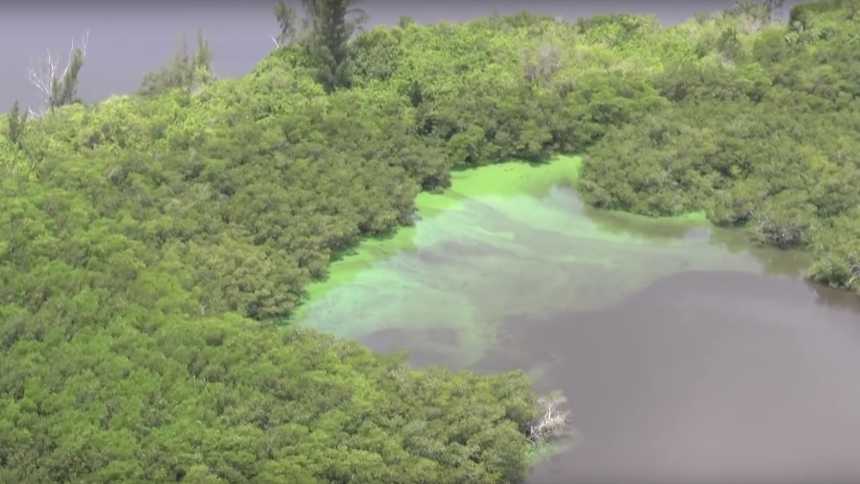Algal Bloom Crisis Forcing Florida Farmers To Tread Water

A recent helicopter tour shows how much the algal bloom has spread in parts of South Florida.
Image courtesy of Martin County, FL (martin.fl.us)
From local newscasts to national talk shows, the thick, green sludge clogging waterways and shutting down popular beaches in Florida has made and continues to make waves in numerous media outlets.
Late last week, following reports of severe algal blooms in South Florida, Gov. Rick Scott issued Executive Order 16-155 declaring a state of emergency in Martin and St. Lucie counties. One day later, Scott amended the order to add Palm Beach and Lee counties to the list.
The Executive Order allows state and local governmental agencies to take action to mitigate the spread of algal blooms in the St. Lucie and Caloosahatchee estuaries by redirecting the flow of water in and out of Lake Okeechobee.
If you read or watch any of the mainstream news reports, and/or browse through the comment sections in any of these stories, the mention of farming – “Big sugar” in particular — bubbles to the surface of likely culprits in the environmental disaster.
The water might not be clear, but one thing is: Despite farmers in the Everglades Agricultural Area being recognized for their efforts to improve water quality through best management practices, a major public relations/perception problem exists.
In response to accusations, U.S. Sugar Corp. has provided and is providing information and data on Lake Okeechobee water releases as well as back pumping. The company has even placed ads in local newspapers including the Ft. Myers News-Press, Naples Daily News, and the Treasure Coast News.
When it comes to employing environmentally friendly technology, the Sugar Cane Growers Cooperative of Florida boasts its farmers lead the way.
Via its website: “Cooperative farmers are pioneering new technological breakthroughs and incorporating thoughtful farming practices that result in cleaner water and healthier soil. We understand that caring for the land is good for business — and we operate with great awareness that the land we farm is ecologically sensitive.”
Following the emergency declaration, the U.S. Army Corps of Engineers office in Jacksonville announced it will reduce the amount of water flowing from Lake Okeechobee into local waterways and estuaries.
Gov. Scott also is directing the Florida Department of Environmental Protection (DEP) and the Florida Fish and Wildlife Conservation Commission (FWC) to take specific actions to address the issues caused by blooms.
The DEP has been directed to:
- Deploy teams of additional staff to more rapidly survey and sample areas impacted by algal blooms.
- Purchase On-Site Microsystin Testing Kits, which allow field staff to perform faster, preliminary tests for toxins on site. These kits will provide information about the sampled algae more quickly and allow preliminary health advisories to be issued.
- Launch a Bloom Reporting Hotline. DEP will be establishing a hotline for citizens to call to report algal blooms, allowing staff to quickly respond to areas with a suspected bloom.
The FWC has been ordered to take the following action:
- Continue deploying FWC Research Institute staff to survey and sample any suspected blooms offshore.
The South Florida Water Management District, too, has been pursuing several actions to address the impact of the blooms. This includes holding additional water in the Upper Kissimmee Chain of Lakes north of Lake Okeechobee to reduce the volume of water flowing south into Lake Okeechobee.
The District has begun requesting the use of private properties to store additional water.
The District will implement Scott’s executive order by accelerating the use of private properties to store additional water. The Florida Legislature and Gov. Scott appropriated approximately $47.8 million for that purpose last session.
DEP’s program will begin to survey businesses affected by the water releases and share the results with various state and local agencies to implement appropriate disaster relief programs.
In response to the recent developments, state Speaker of the House Steve Crisafulli said, “I applaud Governor Scott for cutting through red tape in order to expedite the construction of crucial water storage projects in Martin County and St. Lucie County that the Legislature funded this Session. We know that storing water north, east, and west of Lake Okeechobee is the key to reducing damaging discharges.”









